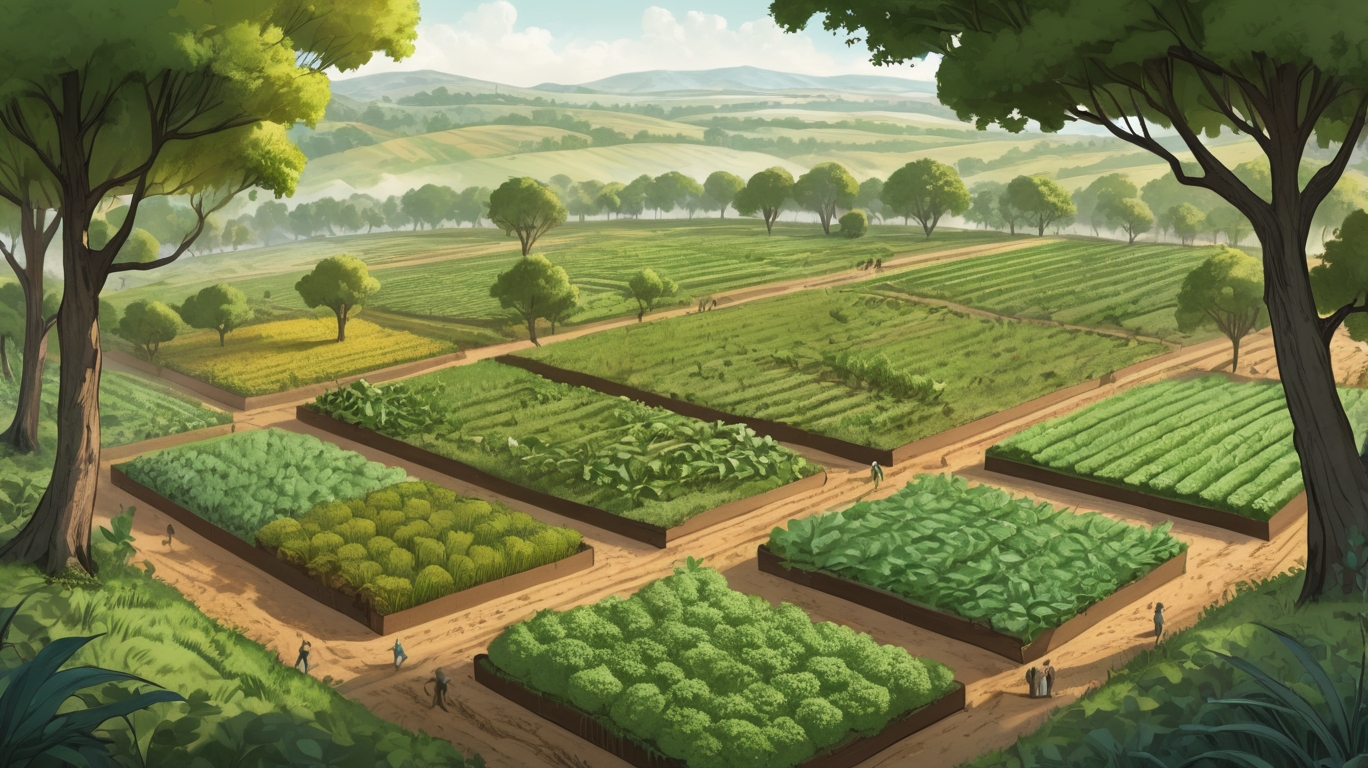Agroforestry: Harmonizing Trees and Crops for a Sustainable Future
In a world where agriculture often prioritizes short-term yields over long-term sustainability, agroforestry offers a balanced alternative. By integrating trees with crops and livestock, this practice nurtures the land while providing economic and ecological benefits. Unlike conventional farming, which can deplete soil and reduce biodiversity, agroforestry fosters resilience, creating systems where nature and agriculture thrive together.
What Is Agroforestry?
Agroforestry is a land-use system that intentionally combines trees, crops, and sometimes animals in a way that mimics natural ecosystems. Rather than viewing trees as obstacles to farming, agroforestry sees them as allies—enhancing soil fertility, conserving water, and offering shade and shelter for crops and livestock.
Common agroforestry practices include:
- Alley Cropping: Growing crops between rows of trees or shrubs.
- Silvopasture: Combining trees with pastureland for grazing animals.
- Windbreaks: Planting trees to protect crops from wind erosion.
- Forest Farming: Cultivating shade-tolerant crops (like mushrooms or herbs) under a forest canopy.
The Benefits of Blending Trees and Crops
1. Improved Soil Health
Trees contribute organic matter through fallen leaves and roots, enriching the soil. Their deep roots also help prevent erosion and improve water infiltration, reducing the need for artificial fertilizers.
2. Biodiversity Boost
A diverse agroforestry system attracts pollinators, birds, and beneficial insects, creating a more balanced ecosystem. This reduces pest outbreaks and decreases reliance on chemical pesticides.
3. Climate Resilience
Trees sequester carbon, mitigating climate change. They also provide shade, reducing heat stress on crops and livestock, which is increasingly important as temperatures rise.
4. Economic Stability
Farmers who practice agroforestry often benefit from multiple income streams—timber, fruit, nuts, and traditional crops—reducing financial risk compared to monoculture farming.
Challenges and Considerations
While agroforestry offers many advantages, it requires thoughtful planning. Farmers must select tree species that complement their crops, manage root competition, and sometimes wait years for trees to mature. However, the long-term rewards—healthier land, diversified income, and climate resilience—often outweigh the initial effort.
Final Thoughts
Agroforestry is not just a farming technique; it’s a philosophy that respects the interconnectedness of nature. By blending trees with agriculture, we create systems that sustain both people and the planet. Whether on a small family farm or a large agricultural estate, agroforestry offers a path toward a more harmonious and sustainable future.
